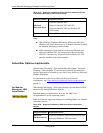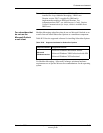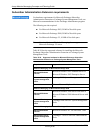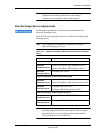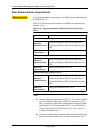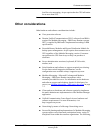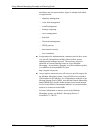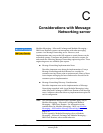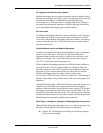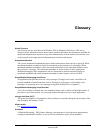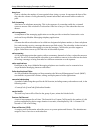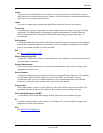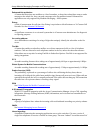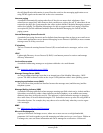
Avaya Modular Messaging Concepts and Planning Guide
C-2 November 2004
Avaya Modular Messaging Concepts and
Planning Guide
Private messages (Modular Messaging—Exchange and Modular
Messaging—Domino)
Modular Messaging does not currently support marking messages for
privacy when sending a networked message or restrict forwarding of a
private message received via networking. This is important to note as the
recipient can forward private messages sent from the Message
Networking solution to another recipient. Priority message markings are
supported.
Voice Message is sent as e-mail message to Modular Messaging—
Microsoft Exchange subscribers
When a voice message is sent to a Modular Messaging—Microsoft
Exchange system, it is treated as an e-mail message with a .wav file
binary attachment. (Not applicable to Modular Messaging—IBM Lotus
Domino).
Manual directory initialization
Modular Messaging does not support automatic directory updates from a
Message Networking server. Hence, the directory entries on a Modular
Messaging system for remote subscribers must be populated manually.
Alternatively, Modular Messaging administrators can extract the directory
from the Message Networking server and import it into the global
directory for Microsoft Exchange and IBM Lotus Domino.
In addition, Modular Messaging subscriber records must also be built on
the Message Networking server. Some possible ways to add subscriber
records are:
! Bulk adding subscribers by file
Use of File Transfer Protocol (FTP) to send a file to the Message
Networking server. This file contains the numeric Network
Addresses and e-mail addresses of Modular Messaging
subscribers.
! Self-registration
Self-registration of each Modular Messaging subscriber on the
Message Networking server. To self-register, subscribers send a
voice name message to a predefined self-registration mailbox on
the Message Networking server.
! Subscriber administration
Message Networking server administrators manually build the
records of each Modular Messaging subscriber on the Message
Networking server, using the administration screen interface.



